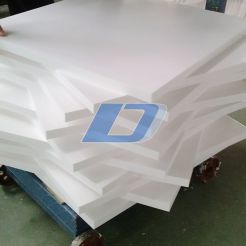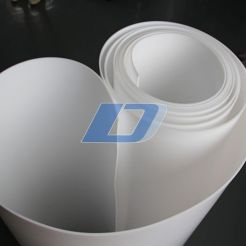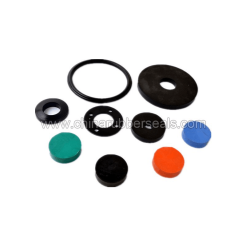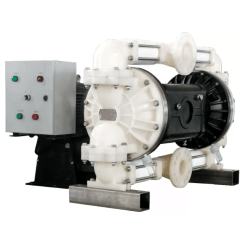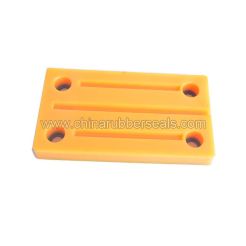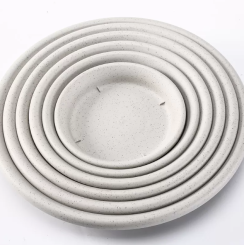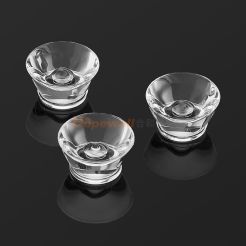Chelating resin D402 extract lithium, sodium, potassium
HAL LAN ™ D402 is an iminoethylene glycol chelate resin, which can selectively adsorb alkali earth metal (calcium, magnesium, strontium, barium, etc.) ions and other bivalent and above bivalent metal ions from alkali metal (lithium, sodium, potassium, etc.) salt solution.
Product Description
HAL LAN ™ D402 is an iminoethylene glycol chelate resin, which can selectively adsorb alkali earth metal (calcium, magnesium, strontium, barium, etc.) ions and other bivalent and above bivalent metal ions from alkali metal (lithium, sodium, potassium, etc.) salt solution. The most common use of this kind of chelating resin is the softening and refining of secondary brine in the chlor-alkali industry, which can make the total content of calcium, magnesium and iron in the brine less than 20ug/l.
Chelate Resin D402 ,It is used for secondary purification of salt water in high soda industry by ion exchange membrane method and selective adsorption of bivalent metal ions.
|
Appearance |
Pale gray or pale yellow beads |
|
Functional Group |
Aminodiacetic acid |
|
Ionic Form as shipped |
Na+ |
|
Weight Exchange Capacity |
1.45(Ca2+)mmol/g |
|
Volume Exchange Capacity |
0.5(Ca2+)mmol/ml |
|
Specific Gravity |
1.15~1.25g/ml |
|
Shipping Weight |
0.72~0.78g/ml |
|
Moisture Retention |
52%~58% |
|
Particle Size Range |
0.425~1.25 mm |
|
Effective particle size |
0.4-0.7mm |
|
Temperate Limit |
80℃ |
|
PH Range |
3-12 |
Chelate Resin D402 is an innovative chelate resin developed by Avantor Solutions, a leading manufacturer of chelate resins. Chelation is the process of forming strong complexes with metal ions, which are of great interest in a variety of industries and applications. These complexes can be used to create a stable and effective separation of substances, such as metals, from aqueous solutions. The Chelate Resin D402 resin provides stability, selectivity, and efficiency in operations applications, helping to protect equipment, ensure product quality, and speed up operations.
Chelate Resin D402 is a strong cation exchanger, with a very high binding capacity. Its ion exchange properties are to the point where it is even used to scavenge low concentrations of metals. This helps to prevent its weak oxidation and biodegradation, although it boasts an extremely low leaching property, enabling the resin to work efficiently in environmental and wastewater applications. Its high selectivity makes it easy to separate specific species from others thanks to its ion exchange ability, which also ensures that it works consistently and effectively.
The Chelate Resin D402 has a particle diameter of 8-12 mesh, which makes it particularly versatile and suitable for a variety of applications. When combined with other components, it can create unique solutions customized to specific needs. This allows it to be used in a wide variety of operations, such as process chemistry and purification, metal recovery, and wastewater treatment.
Chelate Resin D402 is an extremely versatile and durable resin, capable of withstanding many operating conditions. Due to its highly advanced chemical structure, it is highly resistant to chemical attack. It boasts very low to no hydrolysis, meaning it is stable in both low and high pH solutions. Additionally, the resin is compatible with a wide range of solvents, and is more resistant to oxidation than many other chelate resins.
Chelate Resin D402 is a long-lasting, efficient, and extremely reliable chelate resin. Its ion exchange properties, combined with its other beneficial characteristics, make it suitable for applications within industries that require efficient separations, such as the food and beverage, pharmaceutical, petrochemical, and environmental sectors. Its high selectivity means it can be used to achieve a high rate of separation without wasting resources or affecting the quality of the product. Its 8-12 mesh particle size also allows for flexibility in applications, making it an ideal choice for many operations. All of these factors demonstrate that the Chelate Resin D402 is a reliable and efficient choice for many different applications.
Chelate Resin D402 use method is similar, which is described as follows:
a. Load the resin into the exchange column according to the design quantity (note that the minimum height of the resin should not be less than 800mm).
b. Pass into clean water and backwash resin, and control the flow rate to make the resin backwash development rate of 75-100% (backwash flow rate is about 10-15m/h), the time is about 10-20min, until the effluent is clear and free of impurities.
c. Stop backwashing and let the resin settle naturally. Then adjust the water level in the exchange column to 20-30cm above the resin layer.
d. Pass 3-4%HCl solution 2-3 times the volume of resin, about 1 hour through. (The acid solution is best prepared with debrine).
e. Continue to replace the resin with debrine at the same flow rate until the effluent pH is 4-5.
f. Pass 2-3BV of 4-5%NaOH at the same speed, about 1 hour through. (Lye is best prepared with debrine).
g. Continue to inject demineralized brine at the same speed for replacement for about 60min.
h. Then at the running velocity (10-30m/h), continue to clean the resin with debrine until the pH is 8-9, and it can be put into operation.
i. After resin failure, repeat the above 3.2-3.8) operation for regeneration.
Explanation:
In cases where resins are used for recovery of certain metals, a higher concentration of sulfuric acid (e.g. 10-15%) can be used in Step 3.4 to obtain a higher concentration of metal sulfates.

Email: info@Hailanresin.com
Mob.: +86 166 6392 6123
WeChat: +86 166 6392 6123
Whatsapp: +8616663926123
Add.: Henan Province Hebi City Industrial Park


